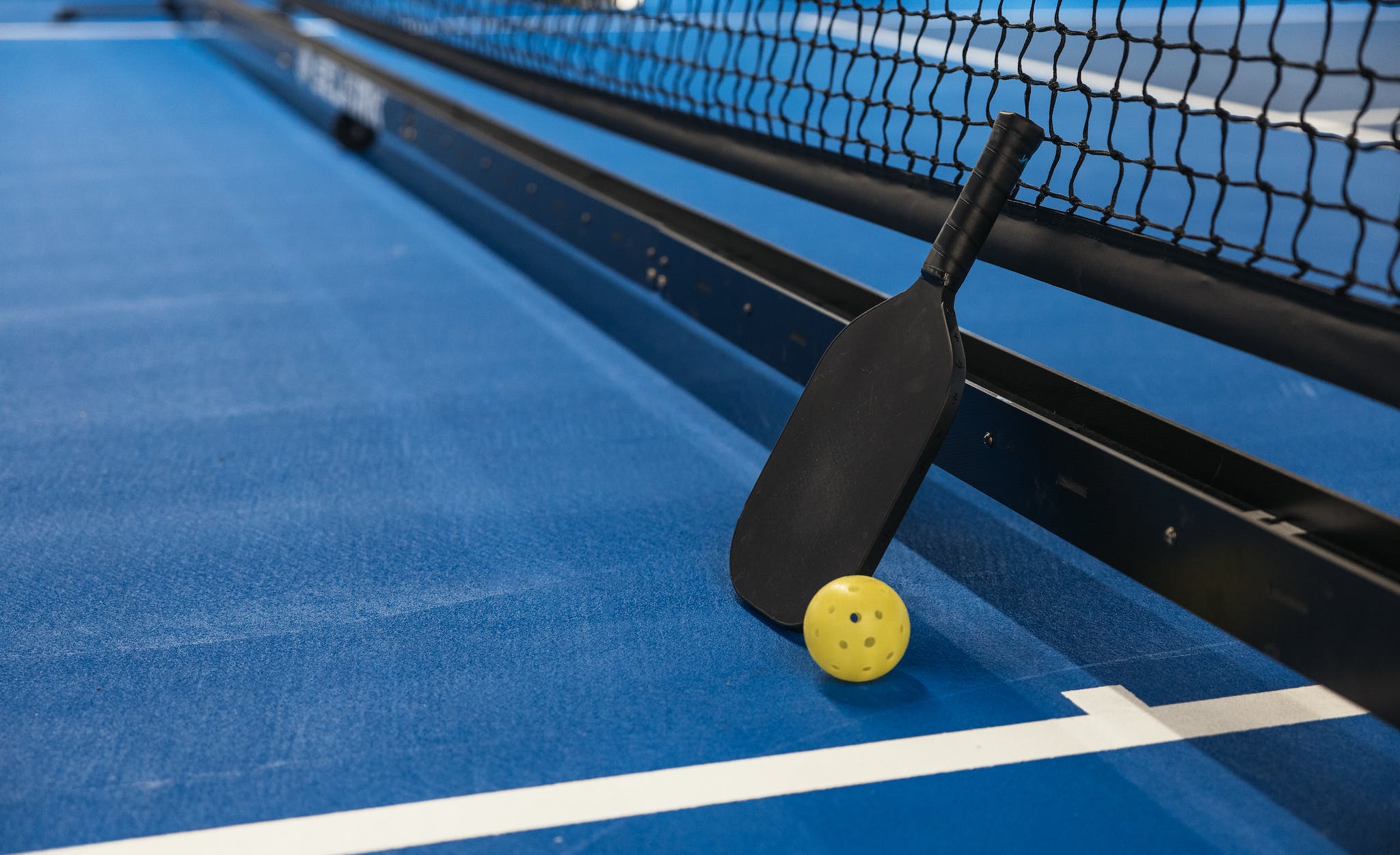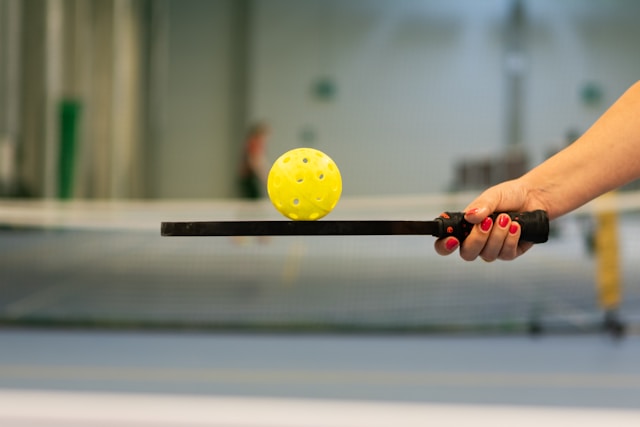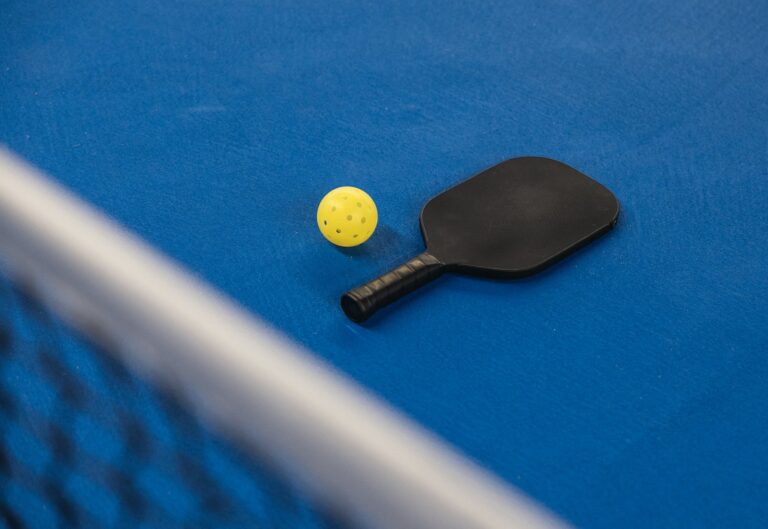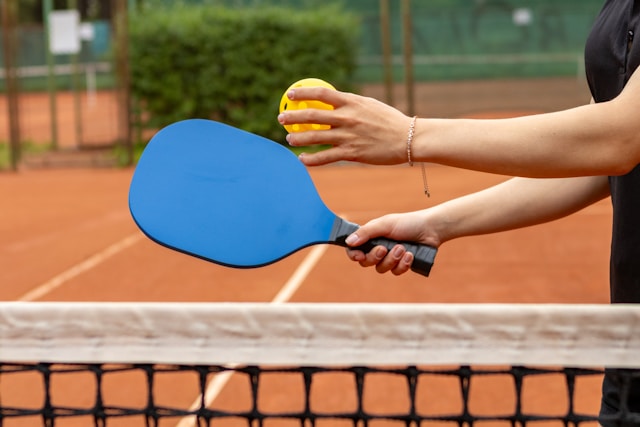What is Pickleball? Explanation of the Fast-Growing Sport
There are some affiliate links below, but they are all products I highly recommend. For more info, view my disclosure here.
If you’re looking for a fun and active way to spend your time, you might want to consider pickleball. This game has become one of the fastest-growing sports in the world, attracting people of all ages and skill levels. But what exactly is pickleball, and how do you play it?
Pickleball is a game that combines elements of tennis, badminton, and ping-pong. It’s played on a court that’s similar in size to a badminton court, and the equipment includes paddles and a plastic ball with holes. The game can be played as singles or doubles, and the objective is to hit the ball over the net and land it within the boundaries of the court. With its simple rules and easy-to-learn gameplay, pickleball has quickly become a popular pastime for many people.
History and Origin
Inception on Bainbridge Island
Pickleball is a paddle sport that originated in the United States in the mid-1960s. It was created on Bainbridge Island, a small island located in Washington State. The game was invented by Joel Pritchard, a congressman, and Barney McCallum, a businessman, who were looking for a way to keep their families entertained during the summer.
The game was initially played with a perforated plastic ball and wooden paddles. The name “pickleball” is said to have originated from the Pritchard family’s dog, Pickles, who would chase after the ball and run off with it. The game was originally called “pickleball” because it reminded the family of the dog’s habit of chasing after the ball.
Key Founders
Along with Joel Pritchard and Barney McCallum, Bill Bell was also instrumental in the creation of pickleball. Bell was a friend of Pritchard’s and helped to design the first pickleball paddle. The trio created the game by combining elements of tennis, badminton, and ping-pong.
The first pickleball court was created by the Pritchard family on their property on Bainbridge Island. The court was the same size as a badminton court, and the net was lowered to 36 inches. The game quickly became popular on the island, and soon spread to other parts of the country.
Today, pickleball is played by millions of people around the world. It has evolved over the years, with changes to the ball, paddles, and rules. However, the basic principles of the game remain the same. It is a fun and social sport that can be played by people of all ages and skill levels.
Equipment and Court Specifications
Pickleball Court Layout
Pickleball is typically played on a badminton-sized court, which measures 20 feet wide and 44 feet long for doubles play. For singles play, the court is 20 feet wide and 22 feet long. The court is divided into two halves by a net that stands 36 inches tall at the center and tapers to 34 inches at the ends. The non-volley zone, also known as the kitchen, is a 7-foot area on each side of the net where players are not allowed to hit volleys.
Pickleball Paddles and Balls
Pickleball paddles are typically made of lightweight materials such as wood, composite materials, or graphite. The paddles are usually 8-10 inches wide and 15-16 inches long. Pickleball balls are made of plastic or a similar material and have holes in them, similar to a wiffle ball. The ball is slightly larger than a tennis ball but smaller than a whiffle ball.
Differences from Similar Sports
Pickleball shares similarities with other racket sports such as tennis and badminton, but there are some key differences. For example, the non-volley zone, or kitchen, is unique to pickleball and requires players to stay back from the net. Additionally, the smaller court size and slower ball speed make pickleball more accessible to players of all ages and abilities. While pickleball can be played on a tennis court or doubles badminton court, the smaller court size is preferred for a more enjoyable playing experience.
Rules and Gameplay
Basic Rules of Play
Pickleball is a game that is played with a paddle and a plastic ball. The game is played on a court that is similar in size to a badminton court. The game can be played with two or four players. The objective of the game is to score points by hitting the ball over the net and into the opponent’s court.
The serving team must serve the ball from the right-hand service court and the ball must land in the opponent’s service court. The receiving team must let the ball bounce once before returning it. After the ball has bounced once, both teams can hit the ball without letting it bounce.
Scoring and Serving
Points are scored when the serving team wins a rally. The serving team continues to serve until they lose a rally. The first team to reach 11 points and lead by two points wins the game.
The serving rotation is determined by the score of the game. If the serving team wins a rally, the server moves to the other service court and serves to the other team. If the receiving team wins a rally, they become the serving team and the server serves from the opposite service court.
Unique Pickleball Features
One of the unique features of pickleball is the double bounce rule. The ball must bounce once on each side of the net before it can be hit in the air. This rule helps to keep the ball in play and makes the game more enjoyable for players of all skill levels.
Another unique feature of pickleball is the 7-foot non-volley zone, also known as the kitchen line. Players cannot hit the ball in the air while standing in the non-volley zone. This rule helps to prevent players from standing too close to the net and dominating the game with their height or reach.
Overall, pickleball is a fun and exciting game that can be enjoyed by players of all ages and skill levels. By following the basic rules of play and understanding the unique features of the game, you can improve your skills and have a great time playing pickleball.
Pickleball Culture and Growth
The game of pickleball has become a popular sport in recent years, attracting players of all ages and skill levels. The sport has a unique culture that emphasizes inclusivity, sportsmanship, and fun. Let’s explore the growth of pickleball culture and its impact on the sport’s popularity.
Popularity and Expansion
The USA Pickleball Association (USAPA) has been instrumental in promoting the sport and expanding its reach. The organization has developed rules, regulations, and standards for pickleball, which have helped to establish the sport as a legitimate and competitive activity. The USAPA has also organized tournaments and events, including the US Open Pickleball Championships, which have attracted top players from around the world.
Professional pickleball has also emerged in recent years, with the formation of the Professional Pickleball Association (PPA) and Major League Pickleball (MLP). These organizations have provided a platform for players to compete at the highest level and have helped to increase the sport’s visibility and popularity.
Pickleball has also found a home in the fitness industry, with many gyms and community centers offering pickleball courts and equipment. The Fitness Industry Association has recognized pickleball as a growing trend and has encouraged its members to embrace the sport.

Health and Social Benefits
Pickleball offers numerous health benefits, particularly for older adults. The sport is low-impact, which makes it easier on the joints than other sports like tennis. Pickleball also requires quick reflexes and hand-eye coordination, which can help to improve cognitive function and mental health.
In addition to the physical benefits, pickleball also has a strong social aspect. The sport can be played in teams or singles, and players often form close bonds with their teammates and opponents. Pickleball tournaments and events also provide opportunities for players to meet others who share their passion for the sport.
Overall, pickleball has experienced significant growth in recent years, thanks to its unique culture and numerous health and social benefits. Whether you are a seasoned player or a beginner, pickleball offers a fun and inclusive way to stay active and connect with others.
Read Next: How Pickleball Got Its Name: A Brief History





